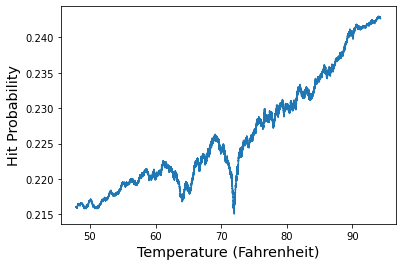Beat the Streak, Day 12: My Grand Vision
Dear blog reader and beat-the-streak enthusiasts alike, Today I want talk about my grand vision for beat-the-streak modelling. I will explain how I have always envisioned a solution for beat-the-streak, but never actually attempted to solve it this way due the complexity of the project and the limited time I have to work on it. I hope this could be the year that I start chipping away at putting this grand vision in practice. In this blog post, I want to explicitly write out this vision along with the sub-problems that would need to be solved to execute this vision. I have hinted at this vision in some earlier blog posts, but now I want to dive a little deeper on exactly what this idea would entail. In short, this vision requires modeling probability distributions at the finest level of granularity (pitches) and using those as building blocks for coarser granularity models (atbats and game). The specific models that I am proposing to train / develop are listed below. Among these,

